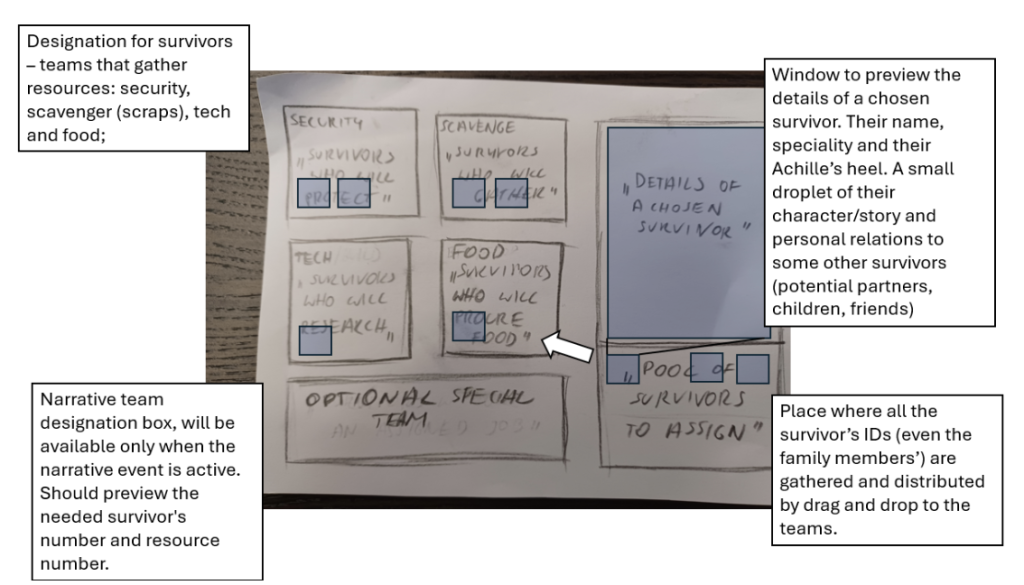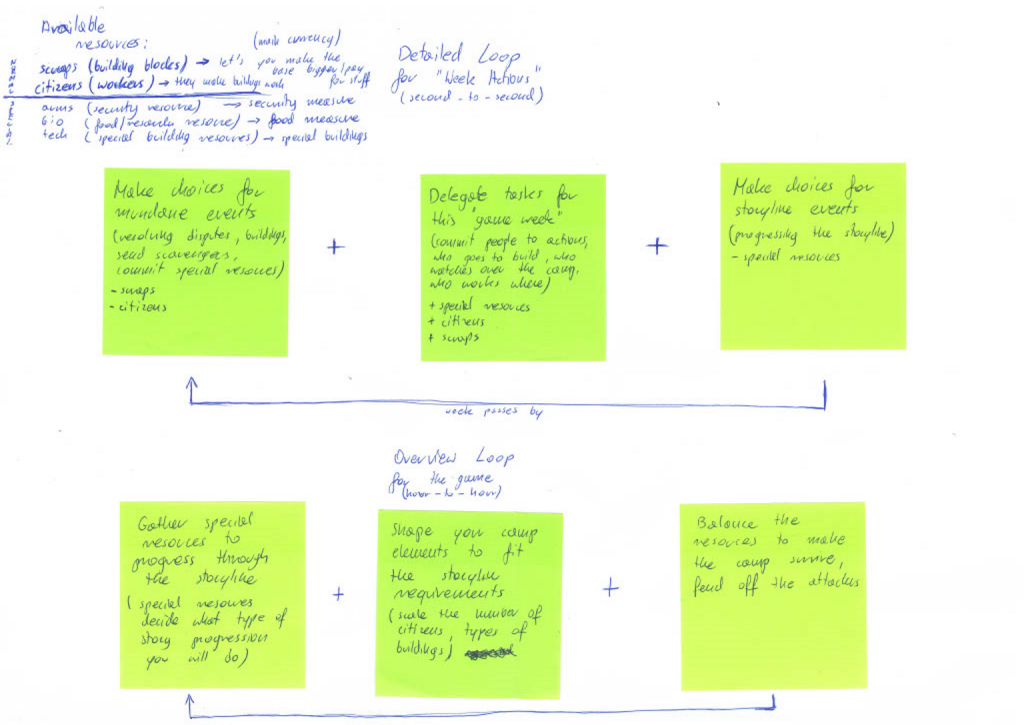Analysing the Game Design Document (GDD) for “Those Left Behind” (TLB) reveals a well-structured blueprint for the development process. The document begins with a concise executive summary, clearly outlining the game’s concept, genre, and target audience. The overview very successfully sets the stage for the detailed information that follows it.
“Those Left Behind” is a post-apocalyptic, management game in which you delegate by resolving narrative conflicts and making narrative decisions that will shape your future. You will become a Chief Scientist of the Off World Project who was left to die with their family on a desolate planet – Earth – after completing the project. You will be responsible for your family and the survivors you choose to take in, ultimately deciding the fate of the group in a setting, where morality and human needs stand in opposition.”
The Essential Experience
This game aims to evoke emotions, and conflicting ones at that. The game wants to show humanity at its lowest, how hope should not be lost when all else has. It aims to make a fictional story personal to the player, forcing them to make choices that ponders on their morals and priorities in a world that may or may not be totally impossible.
The purpose of the game is made clear – it states the need for good stories to teach and bring a sense of hope for the future of the world, especially in a time when there is constant news circulating climate change, rampant social issues and class desparities. Understandably, this is can be very demotivating, however TLB is a discussion on human resilience, survivability and persistence. “It should show that humans can survive, if they have a common goal and good leadership.”. As developers we are asked to put as much of ourselves into the game as we can, to make it meaningful, difficult and relatable. The purpose is supported by the games pillars, which are the essential foundations to keep looking back at and reflecting on, at all stages of the project.
Portraying human experience through struggle & survival
✧Choices should be all about what is precious to us, humans, and opposing those precious things, values, or emotions. Love or Survival. Trust or Security. Home or Safety. Emotional responses are the strongest when we care about both sides of the dilemma.
✧ Introduce humans into the game as a subject and object of the dilemmas. The game is by humans, for humans, with humans and about humans.
Family dynamics & distinct character voices to guide the player
✧ Family makes the player care more about survival and the goal. Family members are tools to help guide the player in many directions at once. Family is an undeniable source of joy, banter and conflict that can shape and increase the player’s engagement.
✧ Characters embody ideas and attitudes inside the game. With distinct voices, that can sharpen the storytelling aspects of the game naturally.
Storytelling that lifts the weight of numbercrunching from management genre
✧ The game is not about tedious work with numbers – player needs to be able to enjoy the game without any prerequistites or abilities.
✧ Refocus the management genre onto the managerial position itself – what baggage comes with being a leader dealing with real world problems, dilemmas and – most of all – people.
Mechanics, Narrative & Visuals
The gameplay mechanics are thoroughly detailed, covering core objectives, progression systems, and user interface elements. The inclusion of sketches and annotation enhances understanding, providing a clear visualisation of player interactions and game flow.



The GDD touches on game elements such as world-building, story arcs, character development, and level design. Each character is given a comprehensive profile, including backstory, motivations, and relationships, which enriches the narrative depth while also providing narrative milestones to lean on when deciding on the most effective and essential parts to create a vertical slice from. These sections are most relevant to me as the world designer and I’ll go into more detail about them separately.
Visual requirements are clearly listed, encompassing aesthetics, colour palettes, music, sound effects, and necessary UI. This comprehensive list was incredibly useful for collaboration among team members, particularly the artists, who were able to gather and identify the necessary information and components to create an art bible (accessed here).
Overall, the GDD was super effective in helping to create a roadmap for the project, providing clarity and direction for us as the development team. Its detailed sections and organised structure contribute to a good understanding of the game’s vision and execution plan. I’m excited to bring it to life!
Leave a Reply